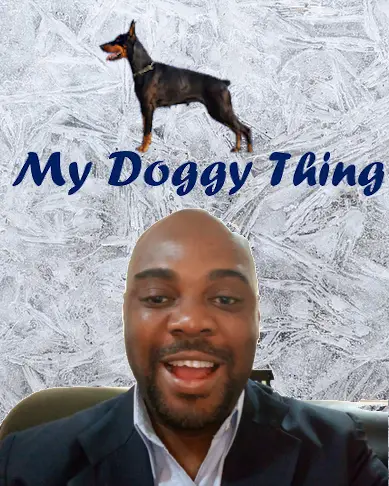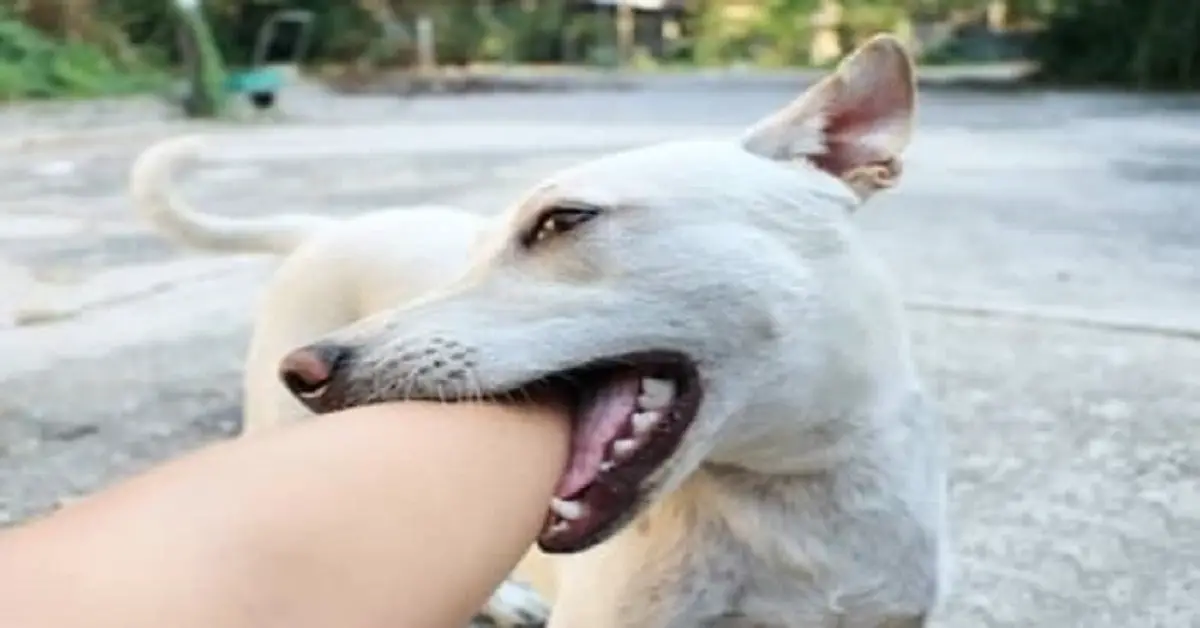If your dog has developed the tendency to grab your arm with his mouth, don’t panic. Sure you have an issue at hand but it’s definitely not life-threatening. Your dog can grab your arm in his mouth for a multitude of reasons, but understanding the natural makeup of your dog will go a long way in further understanding what is going on with your dog.
First of all, a dog’s physical interaction with his environment is primarily through his mouth, apart from eating. Our dogs use their mouth to play and explore the environment around them. Unlike human beings, our dogs do not have the luxury of having a hand to interact with his or her environment. The simple explanation for this is that your dog is trying to get your attention to focus on something important to him or her at that moment.
Puppies are guilty of mouthing their pet parents and each other more often than necessary. This is due to the simple reason that
1.) They are very curious about their environment and are trying to learn as much as they can and as fast as they can. The same way a toddler tries to understand his or her environment with both hands and mouth.
2.) They are growing teeth (a process normally called the teething process) and is sort of itchy to them and mouthing things helps them to relieve the itching.
Older dogs sometimes mouth on their pet owner’s hands or legs, in their case most of the time, this mouthing can be very painful.
As we said earlier all dogs naturally tend towards using their mouth to interact with their environment. That includes playing. If you have noticed anything in your dog while he or she plays with other dogs or animals. It should be the consistency of wanting to use their mouth to interact. This is very much more pronounced in puppies due to their stage in life.
So the question now is what can you do to deal with the situation? Normally, it is not advisable to encourage your dog to grab your arm or any other person’s arm as mistakes can occur which will lead to injuries. So what is the best approach to stopping your dog from grabbing your arm or any other person’s arm in his or her mouth?
The obvious answer to this would be to train your dog not to mouth you or grab your arms and limbs with their mouth. Of the bat, reacting passionately or jumping around and shouting when your dog mouths you will not resolve the issue. This kind of reaction would rather make your dog more excited and encourage him or her to continue grabbing your hands with their mouth.
Instead of reacting passionately, let’s take a cue from puppies when they play. When a puppy bites another puppy in a harmful way, the bitten puppy would yelp very loudly and instantly stop playing with the offender, the offending puppy would then have to display some characteristics of remorse before the offended puppy would agree to play with the offender again.
So how can we incorporate this into our training? Well, when your dog mouths you. You can let out a loud “ouch” and pretend that the limb has lost functionality by letting it fall limp. Your dog would naturally let go of your hand as the message for he or she here is that mouthing or grabbing your arm with his or her mouth is harmful to you. With time your dog should naturally understand.
Another way to handle this situation is, anytime your dog tries to mouth you, raise your arms far from their reach, and just ignore them. Dogs generally get tired of trying to get your attention when they are being ignored. Unless there is clear immediate danger around, your dog would usually put his attention to something else.
You should always try to reward good behavior with rewards such as treats, access to more dog toys, etc. These techniques usually work quite well in getting your dog to stop mouthing you. There are cases where your dog needs to get your attention and you need to train them to use better alternatives.
Training them to use their paws or licking your arm can be good alternatives as there is contact between you and the dog which offers some form of relief for him or her and the appropriate message is being passed on to you, which clearly leads to better bonding between you and your dog.
For adult dogs curbing this behavior is a bit harder, due to lack of training and discipline earlier in their lives. Mouthing has become second nature, you can compare it to a well-mannered gentleman and a thug. A lot of training and obedience classes would be necessary for the adult dog to stop this behavior.
If you notice that your dog is not responding properly to the training given, then the issue might be more in-depth than you know. Mouthing can be an indication of the following issues with your dog and each can be handled properly in their own way.
- Noise Phobia
- Separation Anxiety
- Emotional Issues
- Lack of Mental Stimulation
1.Noise Phobia:
Phobia is usually described as exhibiting a disproportionate amount of fear in relation to the actual amount of danger at hand. For our beloved dogs, noise phobia would be defined as an exhibition of a disproportionate amount of fear when a loud sound occurs. These sounds can range from loud birds to firecrackers to gunshots to thunderstorms and more.
Your dog may exhibit this exaggerated fear by hiding, panting and pacing, barking, seeking out their pet parents and yes you got grabbing your arm with their mouth. You can help minimize this phobia by projecting a calm mental attitude during these loud noise sessions. Our dogs are very aware of our mental state during this period and would react more wildly if we seem disturbed by ourselves. So as much as you can remain calm.
There is also a need to maintain a healthy diet for your dog, hormonal imbalance can lead to all sort of behavior in our dogs including noise phobia
As stated above you can continue your dog’s training but in addition, add some form of desensitizing routine. What I mean here is that you can get a recording of the sound which agitates your dog (thunderstorm, gunshots, etc). Play them at a reasonable tempo. As your dog tries to get your attention by mouthing you. Ignore him or her. When they try to carry on with their normal routine even with the sound playing in the background. Then offer them some sort of reward, a pat on the back, or a treat. As your dog responds to the training, increase the tempo, and continue until your dog starts to act normal around these sounds. It may take a little longer but the desensitization process is worth it.
In extreme scenarios, medication is required in combination with your dog’s training for the behavior to be managed. This phobia might not go away completely in your dog, but it can be reduced to the barest minimum, which would be good for both you and your beloved dog.
2.Separation Anxiety:
This is a common problem, especially in velcro dogs. As described in my article “Why does my dog follow me and not my husband?” Separation anxiety is described as our dogs exhibiting distressing attitudes anytime we leave them alone for a period of time.
As with Noise phobia, your dog may exhibit a wide range of characteristics, one of them would be trying to grab your arm in his or her mouth whenever you try to leave the house. Finding ways to keep your dog engaged when you are away can help reduce their separation anxiety problem.
Toys, Television, radio, etc can be utilized to engage your dog within this period. For separation anxiety, it is always important to dig more into your dog breed and begin some sort of dog training program on your schedule. This will help the dog to adjust his or herself to a schedule that fits both of you and would ease the separation anxiety problem literally.
3.Emotional Issues:
Just like human beings, dogs too can have emotional issues. Things like the loss of a loved one, being abandoned in the wild, bad interaction with other animals (for example a dog that has been used for dogfighting), an accident, natural disaster, etc can lead to a dog having emotional issues.
Signs of your dog having an emotional problem are similar to those exhibited when they have separation anxiety. Signs like destructive behaviors, chewing, peeing in wrong places, howling barking and whining, etc, and in extreme cases signs of aggressive behaviors like tucking the tails in, crouching, etc. It is worth noting that even though the sign exhibited are similar to that of separation anxiety, the two issues are different and should be treated accordingly.
Just like in noise phobia, the desensitization technique can be used to manage emotional issues in your dog. You should also create a safe space for your dog. That means a place where his privacy cannot be invaded without his or her permission. This would be like a safe haven for your dog where they can try to escape stress and worry whenever it creeps in on them (You don’t want him or her running off to another safe space you don’t know about)
Making a safe space comfortable for your dog is important in this situation. A comfortable sleeping area and toys can help him or her to relax and concentrate on other activities which would help calm down the emotional issue.
Also, remember the diet. I know I have repeated it again and again. This is because it is so important but many people keep overlooking this aspect of their dog’s life. An unhealthy diet can seriously mar the effort you put into your dog’s recovery so it’s important to take care of it properly.
4.Lack of Mental Stimulation:
There is an old saying “An idle mind is the devil’s workshop”. This old truth applies to our beloved dogs too. Dogs that lack mental stimulation end up become ill-mannered dogs, prone to one mischief or the other.
Dogs have their own thoughts and emotions. Granted, they might not be as complex as ours still, they are there and need stimulation from time to time. Engaging your dog in physical exercise routines not only challenges his thoughts and emotions but also goes a long way to keep him or her healthy.
It is always advisable to invest small into understanding your dog’s breed and history in other to fully understand what type of physical exercises are best for them. Depending on your breed, some are geared more towards hunting activities, some are working dogs, some are herding dogs, etc. For example, a small or short breed dog would not require much walking as a bigger or larger dog would. German shepherds should as a general rule not be exercised immediately after they have eaten and so on.
I hope you get the idea here, there are so many options now available for us to choose from in order to help exercise our dogs from chew toys, to puzzles, to indoor obstacle courses, to outdoor obstacle courses, The list goes on and on.
You will find out that a mentally stimulated dog is easier to train and is generally a happier, healthier dog both emotionally and physically.

Hi, I am Charles Nwankwo Editor-in-Chief, Mydoggything.com. Gleaning from Professional Dog Trainers, behaviorist, Registered Veterinarians, and Breeders. We are passionate about making dog care easy for you. My job is to make sure that you get the best-updated dog care information to understand and take care of your dog or dogs.

